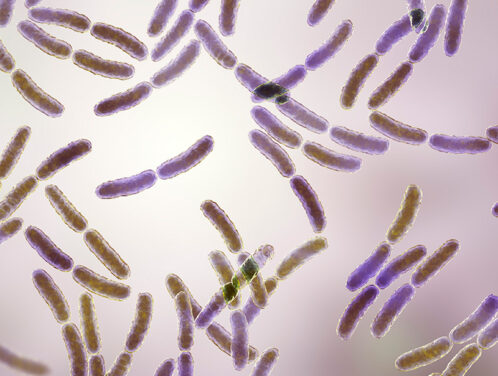Your vaginal flora is another term for the vaginal microbiome, the mixture of good and harmful bacteria inside the vagina. Most of the bacteria present in a healthy vagina are of the type Lactobacillus, which you can think of as ‘good’ bacteria. Different strains of Lactobacillus produce lactic acid and hydrogen peroxide, which guard against infections, protect the vagina from other harmful organisms, and help balance colonies of good versus harmful bacteria in the vagina, to keep everything at a healthy acidic pH level of around 4.
Researchers have found that when vaginal flora or the vaginal microbiome becomes disrupted — which can happen quickly and without warning — the vagina, home to over 50 species of bacteria, can lose Lactobacillus. When that happens, it leaves the vagina vulnerable to infections, the most common being Bacterial Vaginosis (BV).
BV is characterized by a depletion of that good bacteria and a proliferation of other pathogens, considered harmful bacteria. Symptoms include a foul-smelling gray or white discharge, itching and discomfort. It can seriously affect pregnant women when left untreated and can lead to pelvic inflammatory disease, compromising fertility. Unfortunately, antibiotic treatment alone often does not help restore Lactobacilli, and the addition of probiotics may be helpful.
When the vaginal microbiome is disrupted, it can also become more vulnerable to a common yeast infection, an overgrowth of Candida albicans, other Candida species or less commonly, non-Candida fungal infections. Losing Lactobacillus can also leave women more vulnerable to the risk of HIV and other sexually transmitted infections (STIs). This is why maintaining healthy vaginal flora is essential.
Your Vaginal Flora
It’s important to remember that the composition of your vaginal flora can vary throughout your life. Hormonal changes associated with menstruation, pregnancy and menopause can alter the pH of the vagina and, therefore, the microbial makeup of vaginal flora. Unprotected sexual activity, the use of certain contraceptive methods, such as spermicides or condoms, a change in hormones, your menstrual cycle and poor hygiene or diet can also impact the composition of vaginal flora.
Maintaining a Healthy Vaginal Flora
Overall, understanding and maintaining healthy vaginal flora is essential to women’s reproductive health. Here’s how to maintain a healthy vaginal microbiome:
- Have regular gynecological checkups with your healthcare practitioner.
- Keep the vagina clean and dry by not remaining in damp clothing, avoiding tight-fitting clothes and changing underwear more frequently in hot, humid or sweaty environments.
- Wear breathable cotton underwear and avoid thongs.
- Wipe from the front to back after using the restroom.
- Don’t douche.
- Only take antibiotics when warranted and prescribed by your doctor.
- Consider taking a probiotic. Probiotics Lactobacillus crispatus and Lactobacillus rhamnosus, have been shown in human trials to be beneficial for vaginal health to restore a more balanced vaginal flora.
While the composition of vaginal flora can be affected by numerous factors, taking proactive steps to promote good hygiene, practicing safe sex, and avoiding the overuse of antibiotics can help maintain a healthy balance of microorganisms within the vagina.
While keeping good habits can go a long way in maintaining a healthy balance of vaginal flora, remember to talk to your healthcare practitioner if you think you have a vaginal infection or if you have questions about vaginal health. Vaginal health testing can help diagnose your issue accurately so your provider can prescribe the most effective treatment. To learn more about vaginal health testing options, visit MyPathAdvantage.com/faqs.






